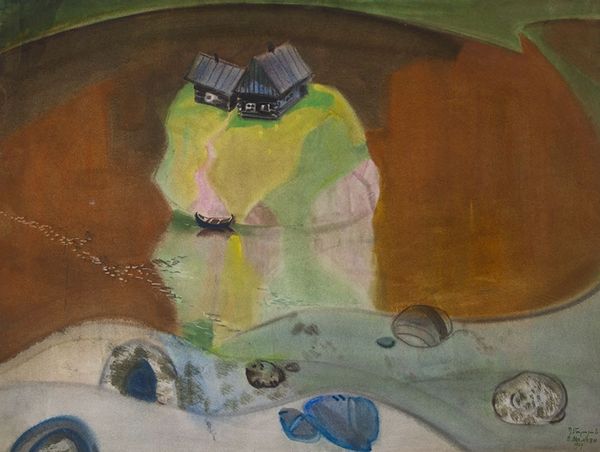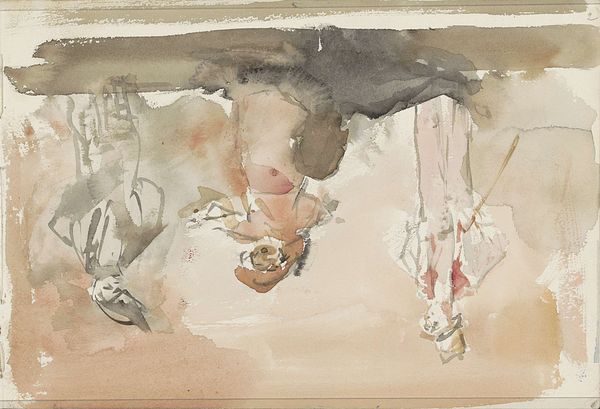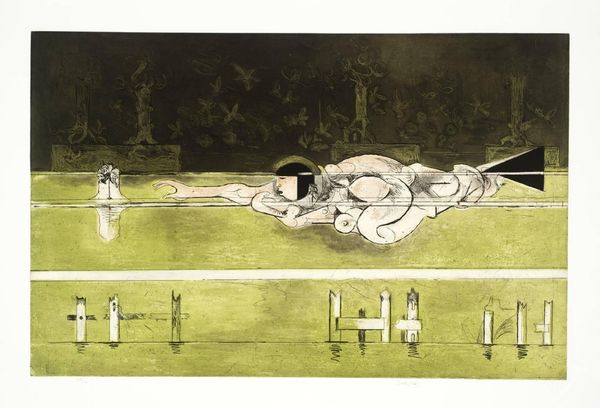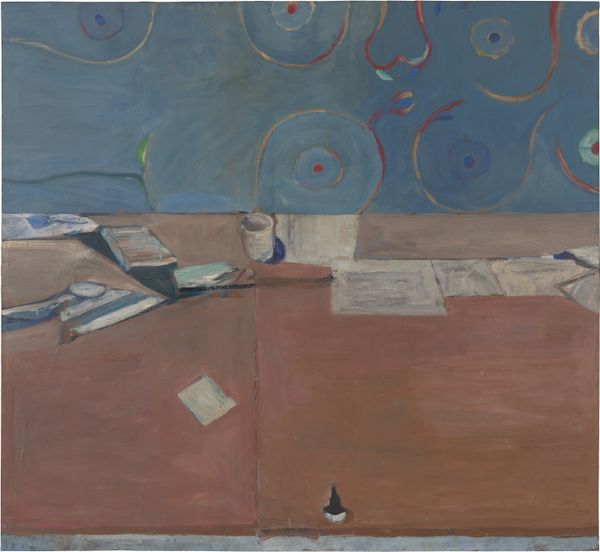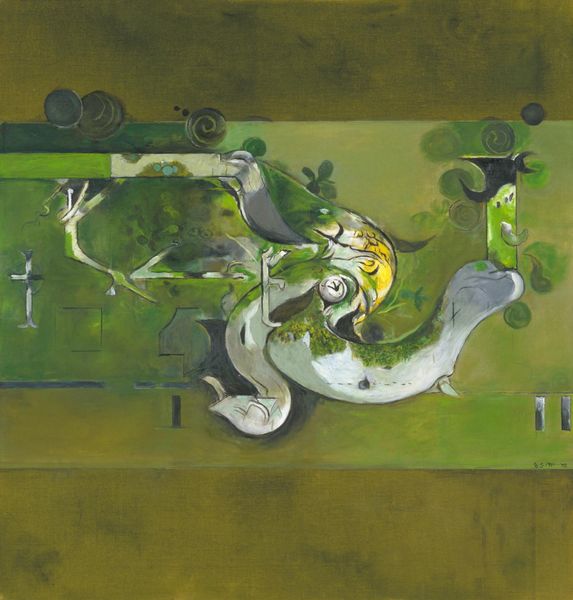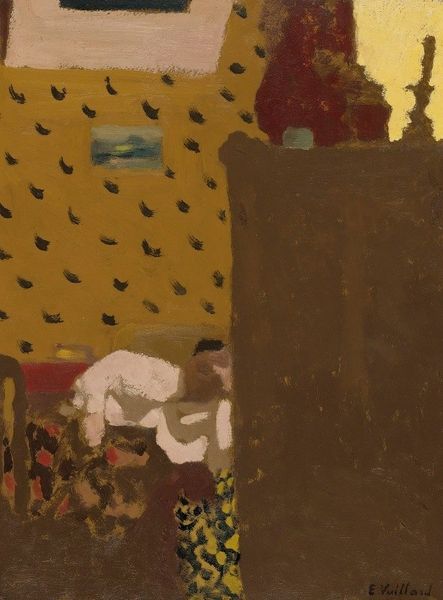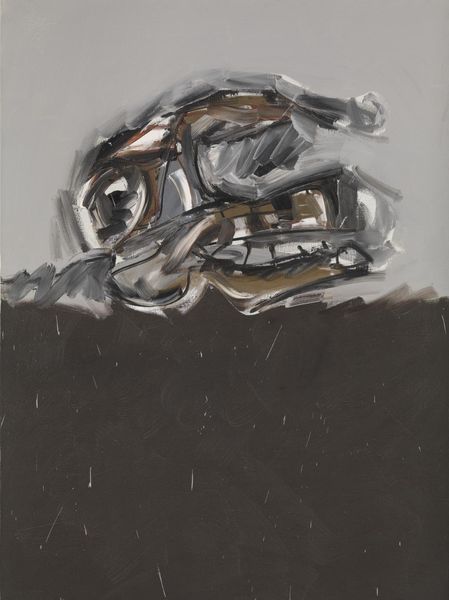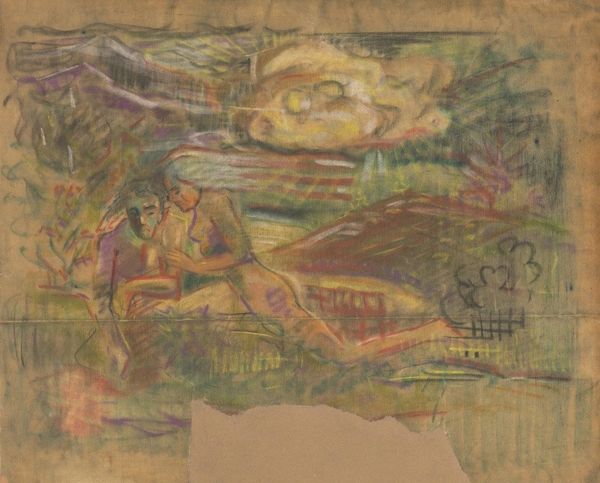
Dimensions: support: 1981 x 1372 mm frame: 2185 x 1580 x 118 mm
Copyright: © Tate | CC-BY-NC-ND 4.0 DEED, Photo: Tate
Curator: Francis Bacon's "Study of a Dog," currently housed at Tate Britain, is a large-scale painting rendered on a support measuring nearly two meters tall. It's immediately striking, wouldn't you agree? Editor: Absolutely, the rawness hits you first. That exposed canvas—it's almost confrontational. The sketchiness of the dog itself, like a fleeting glimpse of something primal, emphasizes the materiality and physical process of making. Curator: Bacon’s art often grapples with existential themes, deeply rooted in the socio-political anxieties of the 20th century. How do you think this piece contributes to that discourse? Editor: By stripping away the veneer, Bacon exposes the animalistic underbelly. This crude depiction, juxtaposed with the clinical setting, highlights the construction of identity itself, the labor involved, and the social forces at play. Curator: Precisely. I think Bacon’s ability to capture this tension is precisely why his work continues to resonate so powerfully within the public consciousness. Editor: Indeed, by questioning the artifice of representation, Bacon challenges the viewer to confront the often brutal realities underpinning our own constructed world.
Comments
tatebritain about 1 month ago
⋮
http://www.tate.org.uk/art/artworks/bacon-study-of-a-dog-n06131
Join the conversation
Join millions of artists and users on Artera today and experience the ultimate creative platform.
tatebritain about 1 month ago
⋮
Throughout his career, Francis Bacon included animals in his paintings to represent the wildness of human emotion. Here, Bacon viscerally smears paint to suggest a snarling dog, evoking aggression, vulnerability or both. The image comes from Eadweard Muybridge's 1887 time-lapse photographs of animals in motion. Bacon isolates the dog, placing it in an ambiguous setting based on the sea front in Monte Carlo, where he lived from 1946 to 1950. Gallery label, August 2024
